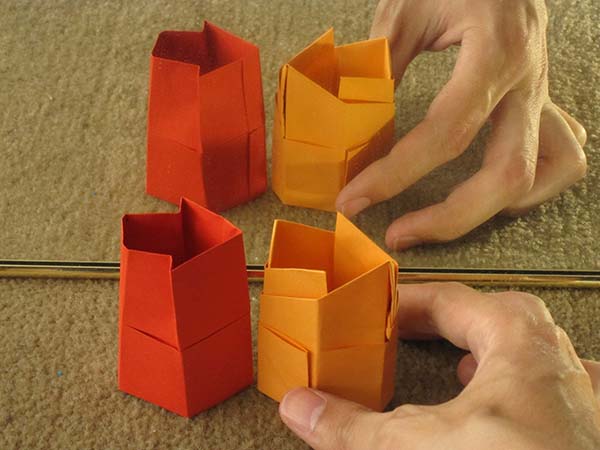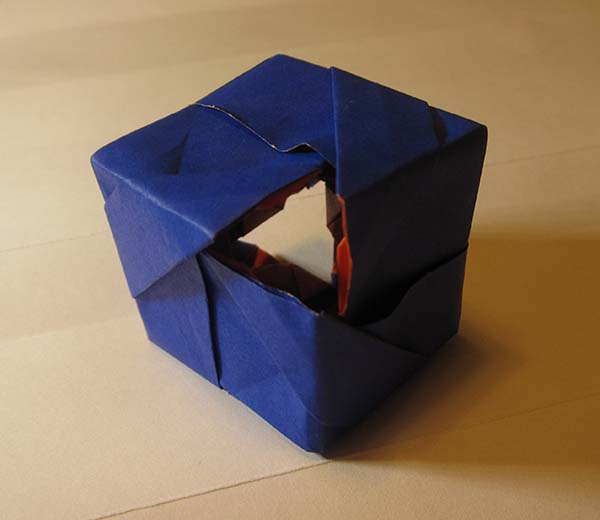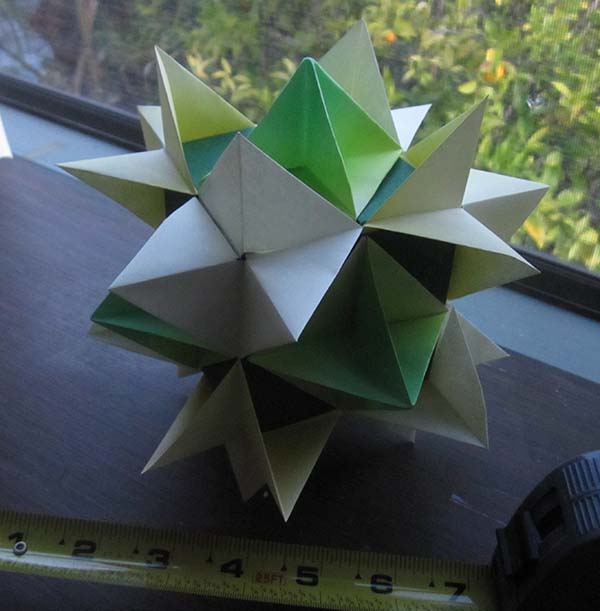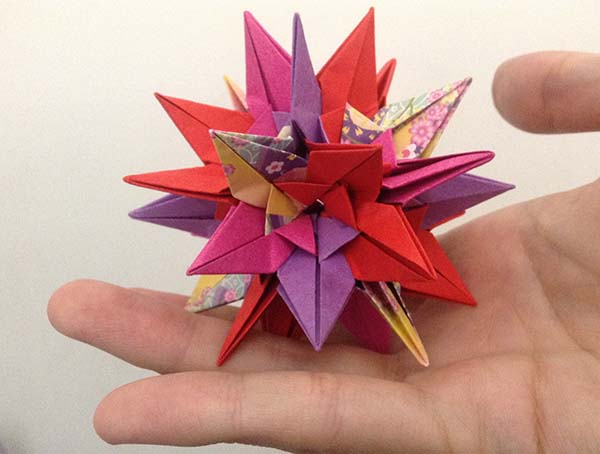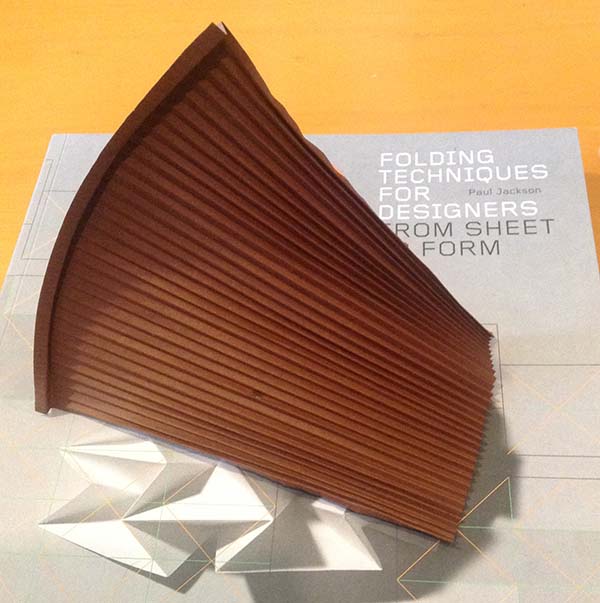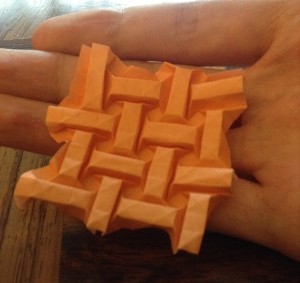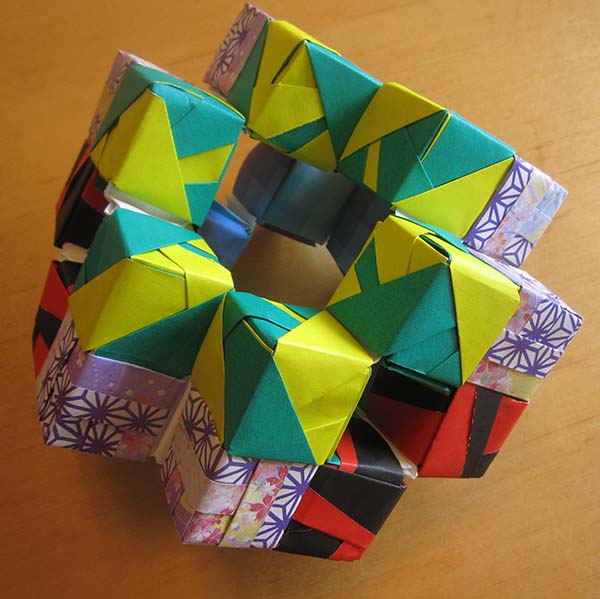
Three-Form, a model designed by me. Some of the component cubes are taken directly from Meenakshi Mukerji.
I was looking through my photos, and I realized that there are several large models that I never got around to sharing. This is one of them. The Three-Form consists of 24 little cubes, assembled into a larger mathematical design.
This one is inspired by General Relativity, Einstein’s theory of gravity. At the time I was reading Sean Carroll’s textbook on the subject, and I was lamenting how difficult it was to visualize the mathematical concepts therein.

